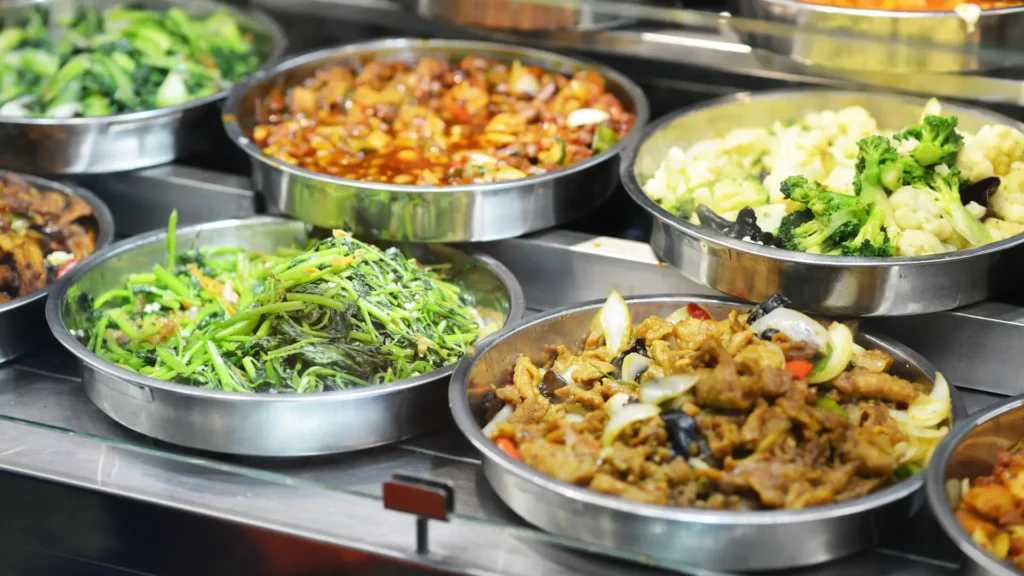What if you could take a step towards a healthier weight without making drastic changes to your lifestyle? The secret lies in calorie cutting from each meal. Specifically 100 calories each meal.
For those who are new to this concept, let’s start by understanding why reducing calorie intake can be beneficial.
Why Reducing Calories is Important for Weight Management and Overall Health
When you consume more calories than your body burns, the excess gets stored as fat, leading to weight gain over time. Conversely, when you create a calorie deficit, that is, you burn more calories than you consume, your body starts using stored fat for fuel—resulting in weight loss.
How Cutting Just 100 Calories Can Help
In this article, we delve into how we can trim 100 calories from breakfast, lunch, and dinner. These small but consistent changes can make a significant impact on your journey to a healthier weight. We will navigate through healthier food choices, portion control tips, exercise suggestions and much more.
1. Reduce 100 Calories from Your Breakfast
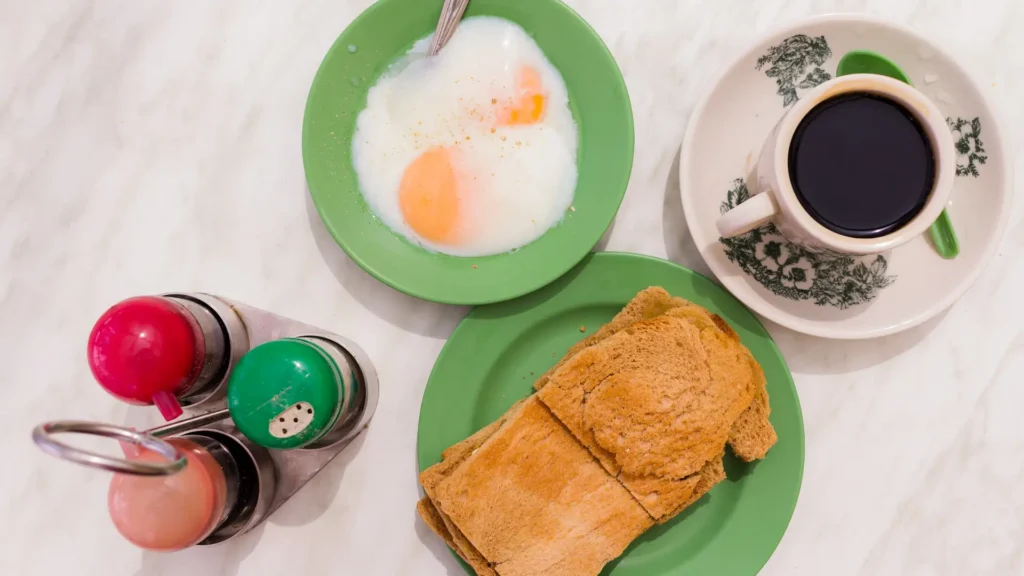
Why is breakfast important? It’s the first meal of the day that kickstarts your metabolism, providing you with the energy to get you through the morning. But here’s a twist – keeping an eye on your breakfast calories can significantly contribute to your weight loss efforts.
High-Calorie Breakfast Examples
Let’s examine some popular high-calorie breakfast foods common in Singapore:
- Roti Prata: While tasty, this Indian flatbread fried in ghee can pack a calorie punch.
- Kaya Toast with Soft-boiled Eggs: The sugar-laden kaya jam and butter on the toast significantly increase the calorie count.
- Char Siew Pau: These steamed buns filled with barbecued pork are often high in both sugar and fat.
These local favourites might be hard to resist but they carry a high calorie load and may not be the best choices for weight management.
Swapping for Healthier Options
Don’t worry, there are plenty of delicious, low-calorie alternatives available:
- Swap Nasi Lemak for Chwee Kueh (steamed rice cake). It’s a healthier option that can still satisfy your local food cravings.
- Instead of Roti Prata, why not opt for Thosai? It’s made from fermented batter, making it a lighter choice.
- Kaya Toast can be replaced by whole grain bread with a thin spread of kaya jam. You’ll still get the taste without as many calories.
- Choose Siew Mai (steamed dumpling) instead of Char Siew Pau. They’re lower in sugar and fat but equally satisfying.
Cutting calories doesn’t mean you have to compromise on flavor or satisfaction from your meals. Additionally, by making smarter local food choices like these, you can start each day on a healthy note and work towards your weight loss goals.
2. Lighter Lunches with These 100-Calorie Cutting Strategies
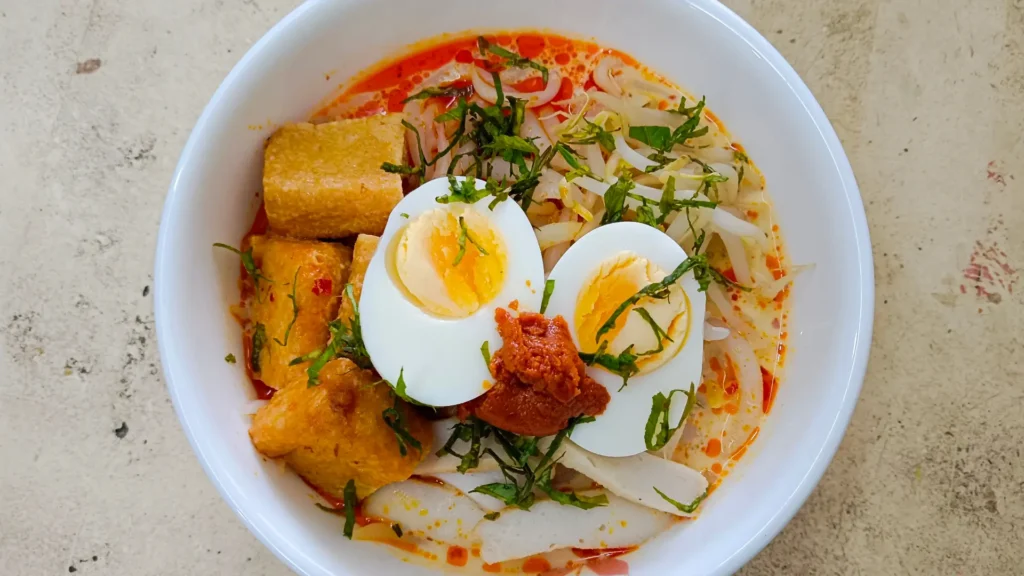
A balanced and portion-controlled lunch is essential for maintaining energy levels throughout the day and supporting weight management goals. Rather than a quick fix that leads to an afternoon slump, healthier lunch habits set the tone for smart choices that fuel the body effectively.
Take Note of These High-Calorie Lunch Choices:
- Nasi Lemak: A local favorite, but the coconut rice and fried accompaniments can be high in calories.
- Laksa: Delicious but often heavy on coconut milk, which is calorie-dense.
- Fast Food Options: Like elsewhere, fast-food burgers and fries are high in calories and low in nutrients in Singapore too.
Healthier Alternatives to Consider:
- Grilled Chicken Salad: Not traditionally Singaporean, but readily available. Choose a light dressing over creamy ones to keep it healthy.
- Popiah: A fresh spring roll filled with vegetables and lean proteins. It’s a healthier local choice.
- Yong Tau Foo with Clear Soup: Opt for this dish with a variety of vegetables and tofu in a broth-based soup for a filling yet low-calorie meal.
Read More: Sugar Rush: 5 Insights Into The World Of Sweeteners
Simple Swaps for Instant Savings:
- Swap out creamy pasta dishes for something grilled, like a grilled chicken salad. The protein will keep you full without the excess calories from heavy sauces.
- Replace regular mayonnaise with mustard or hummus in sandwiches. These alternatives add flavor while cutting calories.
By making these adjustments, you can enjoy a satisfying lunch that doesn’t derail your calorie-conscious eating plan.
3. Delightful Dinner Ideas: Keeping Your Evening Meal Under 100 Calories
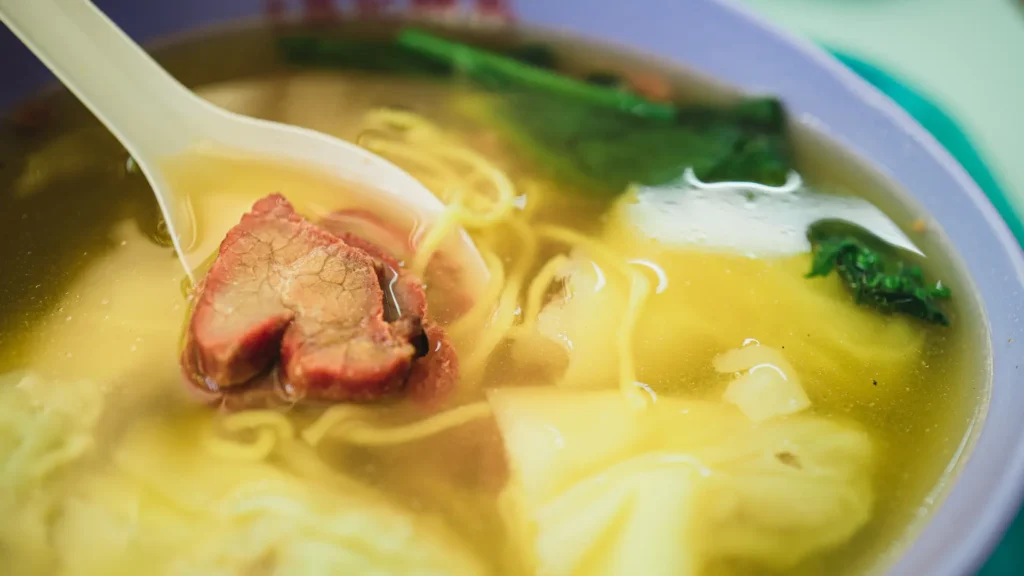
The quest for an ideal dinner intake often leads to the common advice of eating a light evening meal. This approach not only aids in preventing excessive calorie consumption before bedtime but also ensures that your body receives the balanced nutrients it needs to repair and rejuvenate overnight.
Lower-Calorie Dinner Options:
- Grilled Fish with Kang Kong: This is a delightful and simple-to-prepare dish. Opt for lean fish such as snapper or pomfret, which provide quality protein without an overload of calories. Pair this up with blanched Kang Kong (water spinach) for a nutrient-rich plate that aids in managing your caloric intake.
- Stir-Fried Mixed Vegetables with Tofu: Tofu is a versatile ingredient that absorbs flavours well, making it perfect for a stir-fry. Use your wok to stir-fry a mix of bell peppers, snap peas, mushrooms, and a dash of light soy sauce for depth. The fibre from the vegetables and protein from the tofu will keep you full, helping to prevent late-night snacking.
Incorporating these tasty and nutritious dishes into your dinner routine will help you control your calorie intake while still enjoying meals that are bursting with flavour.
Read More: The Oily Truth: How to Choose Cooking Oil?
Maintaining Fullness and Satisfaction Throughout the Day

Reducing caloric intake doesn’t mean sacrificing feeling full, nor does it entail a loss of flavor and satisfaction in meals. Successful calorie management hinges on smart food choices that promote satiety, the feeling of fullness that lasts well after eating, and palatability—the enjoyment derived from flavorful foods. Here are effective strategies to enhance both:
Fill Up on Fiber and Protein
Fiber-rich foods:
- Integrate whole grains like quinoa or barley for a robust foundation in meals.
- Snack on berries or pears, which offer a sweet treat along with a fiber boost.
- Incorporate legumes such as lentils or chickpeas in salads and soups for added texture and nutrients.
Lean proteins:
- Opt for grilled chicken breast or turkey slices to power up protein intake without excess calories.
- Add fish like salmon or cod to your dish for a dose of protein and heart-healthy omega-3 fats.
- Stir tofu into your vegetable mix, giving the meal substance and an inviting variety in taste.
By emphasizing these components in your diet, you create meals that are not only lower in calories but also rich in the elements essential for long-term satiety. This approach ensures that each bite contributes positively towards maintaining energy levels, managing hunger, and supporting overall health without leaving you feeling deprived.
Planning Well for Success: Healthy Meal Plans for 100-Calorie Control
Meal planning is a key part of maintaining a healthy diet and managing calorie intake. When you prepare your meals ahead of time, it becomes easier to avoid high-calorie snacks and fast food, which helps you stick to a balanced diet.
Benefits of Meal Planning
- Ensures Consistency: It’s easier to stick to your calorie goal when you have a meal plan because you don’t have to think about what to eat next.
- Promotes Variety: A well-thought-out meal plan can include different types of foods, so you don’t get bored with your meals and get all the nutrients you need.
- Saves Time and Money: When you shop with a list based on your meal plan, you’re less likely to buy things on impulse and waste food.
Creating Balanced Meal Plans
Here are some tips for creating balanced meal plans:
- Start with Vegetables: Fill half of your plate with vegetables – they’re low in calories and packed with nutrients.
- Choose Lean Proteins: Include lean meats, fish, or plant-based proteins like beans and lentils.
- Opt for Whole Grains: Swap refined grains for whole grains like brown rice or quinoa to add more fiber to your diet.
- Include Healthy Fats: Add small portions of nuts, seeds, or avocado for healthy fats that keep you satisfied.
Ensuring Adequate Nutrient Intake
It’s important to include a variety of food groups in your meals every day to make sure you’re getting all the nutrients your body needs:
- Fruits and Vegetables: These are rich in vitamins, minerals, and antioxidants that support overall health.
- Proteins: They are essential for repairing and building muscles.
- Carbohydrates: They provide energy for your body throughout the day.
- Fats: They are necessary for hormone production and absorbing certain vitamins.
- Dairy or Alternatives: These are important sources of calcium and vitamin D for strong bones.
By including each of these groups in your daily meals, you can enjoy a variety of flavors while still controlling your calorie intake. Also, having a well-balanced plate leads to sustained energy levels and overall well-being without compromising on your calorie goals.
Minding Your Portions, Enjoying Every Bite: The Dual Strategy for Calorie Success
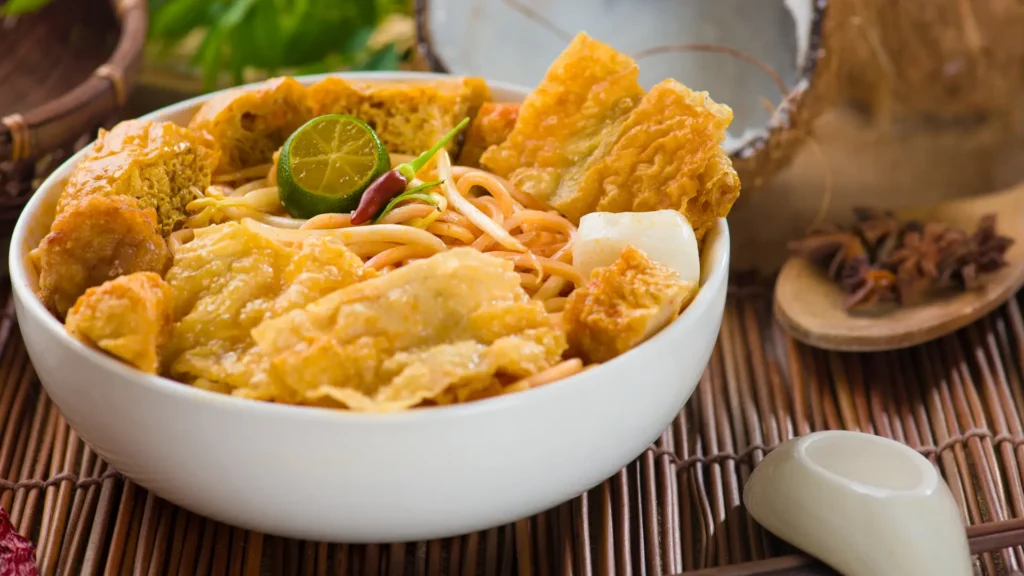
Controlling portion sizes and practicing mindful eating are two powerful strategies that work in unison to aid your calorie-cutting journey. These techniques can transform your relationship with food, making the calorie-cutting process an enjoyable and satisfying experience instead of a strenuous task.
Minding Your Portions
Portion control is a straightforward yet effective approach to manage your calorie intake. It’s not just about eating less; it’s about understanding how much you truly need. Practice this by serving yourself slightly smaller portions than usual. Use smaller plates and bowls, as they can make a small portion appear larger, tricking the brain into feeling more satisfied.
Find out about Healthy Plate and how to manage your portions.
Savor the Flavors Mindfully
Mindful eating, on the other hand, teaches us to appreciate our meals more deeply. This practice involves paying full attention to the sensory experiences—taste, smell, texture—of each bite. By slowing down and truly savoring our meals, we often find that we feel satisfied with less.
Here are three easy ways to incorporate mindful eating into your routine:
- Chew Slowly: Take the time to chew each bite thoroughly. This not only improves digestion but also gives your body enough time to register feelings of fullness.
- Sip Water Between Bites: Take small sips of water between bites. This helps slow down your eating pace and keeps you hydrated.
- Listen to Hunger/Fullness Cues: Pay attention to your body’s signals. Start eating when you’re genuinely hungry and stop when you’re comfortably full—not stuffed.
These twin tactics of portion control and mindful eating can significantly enhance your success in cutting 100 calories from each meal. Together, they create a balanced approach towards healthier eating habits while still enjoying every bite of your food.
The Extra Boost: Exercise Tips to Supplement Your 100-Calorie Cutting Journey

Regular physical activity plays a crucial role in your calorie-cutting journey, just like your diet. It not only helps create a calorie deficit but also brings numerous other benefits, such as boosting metabolism, improving heart health, enhancing mood, and contributing to overall well-being.
How to Burn 100 Calories with Moderate Exercises
Here are some examples of moderate exercises that can help you burn approximately 100 calories:
- Brisk Walking: Walk at a faster pace for around 20 minutes.
- Casual Cycling: Enjoy a leisurely bike ride for about 15 minutes.
- Leisure Swimming: Take a relaxed swim for approximately 15 minutes.
- Energetic Dancing: Have fun dancing energetically for about 20 minutes.
These examples demonstrate that you don’t need to engage in intense workouts or have a gym membership to burn an extra 100 calories. Simple daily activities like walking your dog, cycling to work, or even dancing in your living room can contribute towards your goal.
Read More: Diet or Exercise: Which is better for losing weight?
Remember, It’s More Than Just Calories
While these exercises help in burning calories, it’s important to note that everyone’s body responds differently to physical activity. Factors like weight, age, gender, and fitness level can influence the number of calories burned during exercise. So the figures mentioned above are approximate and individual results may vary.
However, instead of getting too fixated on exact numbers, focus on incorporating regular physical activity into your daily routine. The goal is not just about the calories burned during exercise; it’s about making a sustainable lifestyle change that improves your health while supporting your weight management goals.
Stay tuned for the next section where we’ll address some common challenges you may encounter on this journey and provide strategies to help you stay motivated and committed.
Overcoming Challenges and Staying Motivated on Your 100-Calorie Cutting Adventure

Embarking on a calorie-cutting journey can bring about several hurdles, but recognizing these challenges and arming yourself with strategies for overcoming them is key to staying on track.
Common Obstacles and Solutions:
Temptation of High-Calorie Foods
- Stock your pantry with healthy snacks.
- Prepare meal plans that include tasty, low-calorie foods you enjoy.
Feeling Unsatisfied After Meals
- Increase the volume of meals with low-calorie, high-fiber vegetables.
- Include a protein source to help you feel full longer.
Social Eating Situations
- Choose lighter options from the menu, such as salads or grilled entrees.
- Share a dish or take half to go to control portion sizes.
Lack of Time for Meal Prep
- Utilize quick-to-prepare healthy foods like pre-cut veggies or rotisserie chicken.
- Consider batch cooking on weekends to save time during the week.
Staying Positive and Persistent
Remember, consistency is more impactful than perfection. If you slip up:
- Acknowledge it’s a part of the process.
- Refocus on your next meal rather than feeling discouraged.
By remaining adaptable and viewing each day as a new opportunity, you sustain momentum and prevent temporary setbacks from derailing your progress.
Read More: Understanding Motivation: And How to Soar to New Heights
Conclusion
Easy Calorie Cutting, Healthier Lifestyle
Achieving a healthier lifestyle doesn’t have to be hard. Making small changes like cutting 100 calories from each meal can make a big difference in the long run.
- It’s the small, consistent changes that lead to long-term weight management success.
- Every calorie you cut gets you one step closer to your health goals.
We’ve explored various strategies to help you cut calories without sacrificing taste or satisfaction:
- Swapping high-calorie breakfast options for protein-rich alternatives
- Choosing balanced lunches
- Enjoying lighter dinners
- Exercising portion control and mindful eating
Progress is more important than perfection. Don’t be afraid to ask for help from a professional if you need personalized guidance on controlling your calorie intake.
Good luck on your journey to a healthier lifestyle!
Read More: Is Organic Food Really Better for You? Find Out Here

